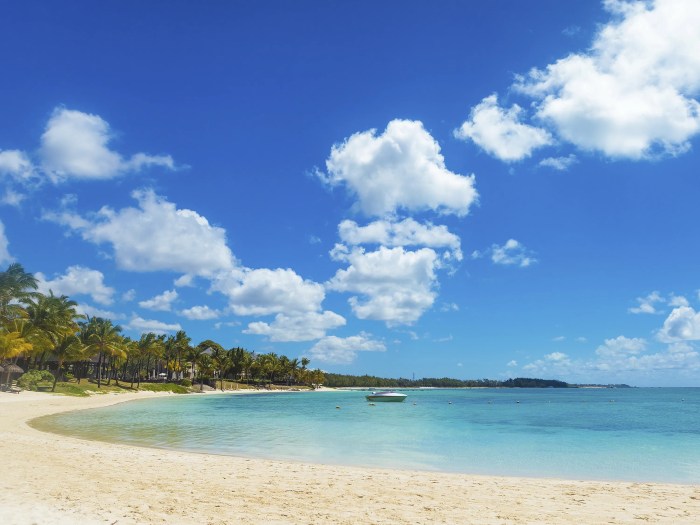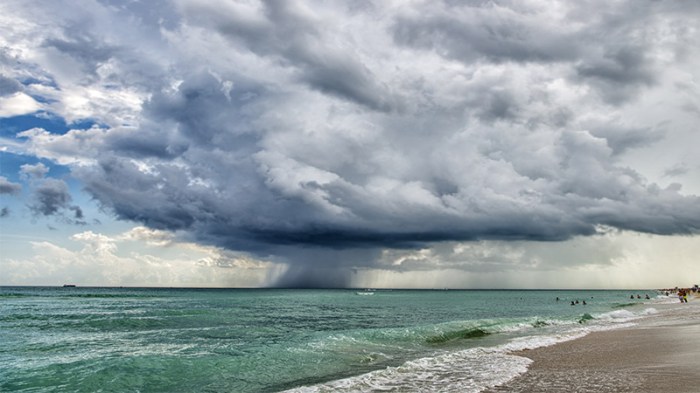Bahamas weather – In the azure waters of the Caribbean, where gentle breezes whisper secrets to palm trees, lies a tropical paradise known as the Bahamas. Its weather, a symphony of sun, sea, and seasonal surprises, plays a captivating role in shaping the allure of these enchanting islands.
From the balmy embrace of summer to the refreshing respite of winter, the Bahamas weather unveils a kaleidoscope of experiences, inviting travelers to immerse themselves in its vibrant tapestry.
Historical Weather Patterns: Bahamas Weather
The Bahamas experiences a tropical climate, with warm temperatures throughout the year. Average temperatures range from 21°C (70°F) in the cooler months to 27°C (81°F) in the warmer months.
The Bahamas enjoys a warm and sunny climate year-round, making it an ideal destination for beachgoers and water enthusiasts. The islands are part of a larger archipelago , which means a group of islands that are close together. This geographic feature contributes to the Bahamas’ consistent weather patterns and stunning turquoise waters, attracting visitors from around the world.
The Bahamas has two distinct seasons: a wet season and a dry season. The wet season runs from May to October, while the dry season runs from November to April. During the wet season, the Bahamas experiences frequent rainfall, with an average of 150mm (6 inches) of rain per month. The dry season is much drier, with an average of only 50mm (2 inches) of rain per month.
The Bahamas has been affected by a number of notable weather events in the past. In 1992, Hurricane Andrew devastated the Bahamas, causing widespread damage and loss of life. In 2004, Hurricane Frances and Hurricane Jeanne also caused significant damage to the Bahamas.
Current Weather Conditions
The current temperature in The Bahamas is 82°F (28°C) with humidity levels around 75%. The wind is blowing from the east at 15 mph (24 km/h).
Over the next 24 hours, temperatures are expected to remain in the mid-80s (°F) with a slight chance of rain.
Wind Speed and Direction
The wind speed in The Bahamas is currently 15 mph (24 km/h) and is blowing from the east. This wind pattern is expected to continue for the next 24 hours.
Seasonal Variations
The Bahamas experiences distinct weather patterns throughout the year, each season bringing its unique characteristics.
During the summer months (June to September), the Bahamas enjoys warm, humid weather with average temperatures ranging from 28°C to 32°C. The humidity levels are high, often exceeding 80%, making the air feel thick and oppressive. Precipitation is frequent, with afternoon thunderstorms common.
In contrast, the winter months (December to March) bring cooler, drier weather. Temperatures average between 21°C and 26°C, with humidity levels dropping to around 70%. Precipitation is less frequent during this time of year, with occasional showers or drizzle.
The spring and fall months (April to May and October to November) offer a transition between the extremes of summer and winter. Temperatures are moderate, ranging from 24°C to 28°C, and humidity levels are comfortable. Precipitation is variable, with occasional showers or thunderstorms.
Impact on Tourism and Local Activities
The seasonal variations in the Bahamas have a significant impact on tourism and local activities. During the summer months, the warm weather and frequent rainfall can make outdoor activities uncomfortable, but the high humidity levels can also make it difficult to cool down. As a result, many tourists prefer to visit the Bahamas during the winter months when the weather is more pleasant.
The cooler temperatures and lower humidity levels during the winter months make it ideal for outdoor activities such as swimming, snorkeling, diving, and fishing. The clear waters and vibrant coral reefs of the Bahamas are a major draw for tourists, and the winter months offer the best conditions for enjoying these activities.
Local activities also vary depending on the season. During the summer months, many Bahamians participate in water sports and other outdoor activities. In the winter months, when the weather is cooler, Bahamians often spend more time indoors, engaging in activities such as cooking, baking, and socializing.
Climate Change Impacts

The Bahamas is highly vulnerable to the effects of climate change, which is significantly altering weather patterns and posing serious threats to the country’s environment, economy, and communities.
Evidence of climate change impacts in the Bahamas includes rising sea levels, changes in precipitation patterns, and an increase in the frequency and intensity of extreme weather events such as hurricanes and tropical storms.
The Bahamas is renowned for its tropical climate, with warm temperatures and abundant sunshine throughout the year. However, if you’re seeking a respite from the Caribbean sun, a visit to Belton House in the United Kingdom might be a refreshing change of pace.
This historic estate boasts stunning gardens and a fascinating history, offering a glimpse into British heritage amidst the lush landscapes of the Bahamas.
Rising Sea Levels
- Sea levels around the Bahamas have risen by approximately 8 inches since 1900.
- Rising sea levels are causing coastal erosion, flooding, and saltwater intrusion into freshwater aquifers.
- These impacts threaten coastal infrastructure, tourism, and the livelihoods of communities that rely on fishing and other coastal activities.
Changes in Precipitation Patterns
- The Bahamas is experiencing more frequent and intense droughts and floods.
- Droughts can lead to water shortages, crop failures, and wildfires.
- Floods can cause damage to infrastructure, homes, and businesses.
- These changes in precipitation patterns are affecting agriculture, water resources, and human health.
Extreme Weather Events
- The Bahamas has experienced an increase in the frequency and intensity of hurricanes and tropical storms in recent years.
- These storms can cause widespread damage to infrastructure, homes, and businesses.
- They can also lead to loss of life and displacement of communities.
- The Bahamas is particularly vulnerable to these storms due to its location in the Atlantic hurricane belt.
The impacts of climate change on the Bahamas are significant and pose a major threat to the country’s future. It is crucial that the Bahamas takes action to adapt to these impacts and mitigate their effects.
Tourism and Weather

The weather in the Bahamas plays a significant role in shaping the tourism industry. With its warm climate and crystal-clear waters, the Bahamas is a popular destination for tourists seeking relaxation and outdoor activities. However, understanding the weather patterns and optimal time to visit is crucial for an enjoyable experience.
The Bahamas experiences a tropical climate, with warm temperatures year-round. However, there are seasonal variations in rainfall and humidity. The dry season, from November to April, offers ideal weather conditions for tourists. During this time, the skies are mostly clear, and rainfall is minimal, creating perfect conditions for beach activities, water sports, and outdoor excursions.
The Bahamas boasts year-round sunshine and warm temperatures, making it an ideal destination for families seeking a tropical escape. While exploring the best family vacation spots in the Bahamas, don’t forget to pack light clothing and sunscreen to enjoy the idyllic weather conditions that await you on this breathtaking archipelago.
Optimal Time to Visit, Bahamas weather
The best time to visit the Bahamas depends on your weather preferences. If you prefer warm and sunny weather with minimal rainfall, the dry season (November to April) is the ideal time to visit. During this period, temperatures average between 24°C (75°F) and 29°C (84°F), with plenty of sunshine and low humidity. This makes it perfect for swimming, snorkeling, diving, and other outdoor activities.
Tips for Tourists
To prepare for the weather in the Bahamas, here are some tips for tourists:
- Pack light, breathable clothing, as the weather is warm and humid throughout the year.
- Bring sunscreen, sunglasses, and a hat to protect yourself from the sun.
- Stay hydrated by drinking plenty of water, especially during outdoor activities.
- Be aware of the hurricane season, which runs from June to November. Monitor weather forecasts and take necessary precautions if a hurricane is approaching.
Weather Data and Resources

Weather data and resources are essential for staying informed about current and future weather conditions. This information can be used to plan activities, make travel arrangements, and prepare for severe weather events.
Historical Weather Data
Historical weather data can provide insights into the climate of a particular area. This data can be used to identify trends, such as changes in temperature or precipitation patterns, which can be helpful for planning purposes.
| Month | Average Temperature (°F) | Average Humidity (%) | Average Precipitation (inches) |
|---|---|---|---|
| January | 70 | 75 | 2.5 |
| February | 72 | 70 | 2.0 |
| March | 75 | 65 | 1.5 |
| April | 78 | 60 | 1.0 |
| May | 82 | 55 | 0.5 |
| June | 85 | 50 | 0.25 |
| July | 88 | 45 | 0.1 |
| August | 89 | 40 | 0.1 |
| September | 86 | 45 | 0.25 |
| October | 82 | 50 | 0.5 |
| November | 78 | 55 | 1.0 |
| December | 72 | 60 | 1.5 |
Real-Time Weather Updates and Forecasts
Real-time weather updates and forecasts can help you stay informed about current weather conditions and plan for the future. There are a number of reputable weather websites and apps that provide this information, including:
- The Weather Channel
- AccuWeather
- Weather Underground
- National Weather Service
Accessing and Interpreting Weather Data
Weather data can be accessed from a variety of sources, including weather websites, apps, and government agencies. Once you have access to the data, it is important to be able to interpret it correctly.
Here are some tips for interpreting weather data:
- Look at the big picture. Don’t focus on individual data points, but rather look at the overall trend of the data.
- Consider the context. The weather data should be interpreted in the context of the location and time of year.
- Use common sense. If the data doesn’t make sense, it’s probably wrong.
Final Thoughts

As the sun dips below the horizon, casting golden hues across the turquoise waters, the Bahamas weather leaves an indelible mark on the hearts of visitors. Its rhythms and patterns, intertwined with the island’s vibrant culture and natural beauty, create a symphony that lingers long after the journey’s end.
FAQ Insights
What is the best time to visit the Bahamas?
The ideal time to visit the Bahamas is during the shoulder seasons (April-May and September-October), when temperatures are pleasant and crowds are smaller.
What is the average temperature in the Bahamas?
The average temperature in the Bahamas ranges from 75°F (24°C) in winter to 85°F (29°C) in summer.
Is there a rainy season in the Bahamas?
Yes, the Bahamas experiences a rainy season from May to October, with occasional showers and thunderstorms.